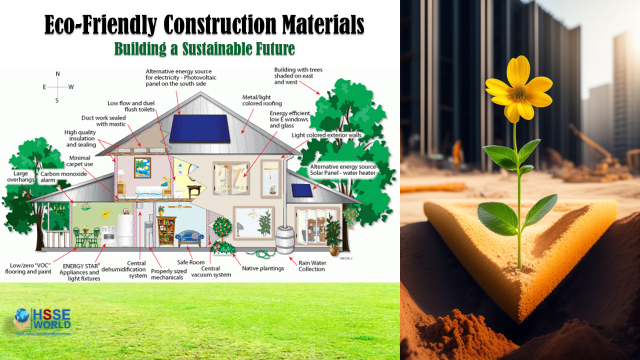What the First Six Months of Silica Enforcement Tells Us
4 min readAs of June 23, enforcement of new standards for silica exposure will kick in for all operations in general industry and maritime. Enforcement in the construction industry began last year, and the enforcement actions already taken in that industry may offer a glimpse into the future for many of the others.

On June 23, most affected employers are expected to comply with all of their obligations under the standard, with the exception of the action level trigger for medical surveillance. This includes offering medical examinations to employees exposed above the permissible exposure limits (PEL) for 30 or more days a year. (Employers in hydraulic fracturing operations in the oil and gas industry face different standards).
Under the new standard, the PEL now limits worker exposures to 50 micrograms of respirable crystalline silica per cubic meter of air, averaged over an eight-hour day.
When the rule was first proposed by the Occupational Safety and Health Administration (OSHA), the silica standard in construction caused alarm among employers in the construction and other industries.
Approved in final form by OSHA in 2016, a court challenge mounted by employer groups, including the U.S. Chamber of Commerce, was defeated in federal appeals court last December. The rule currently covers more than two million workers who are believed to be exposed to some level of silica.
Crystalline silica is in many natural materials that are commonly found in many industrial products and at construction sites, including sand, concrete, stone and mortar. Silica also is used to make products like glass, pottery, ceramics, bricks, concrete and artificial stone. It also is contained in industrial sand and is used in certain foundry work and hydraulic fracking operations.
When it announced the rule, OSHA estimated that 2.3 million workers are exposed to silica when they are at work. It also supported the proposed changes by citing epidemiological studies showing a strong link between silica exposure and lung cancer in at least 10 industries.
When the rule was announced, OSHA said it was expected to prevent 600 deaths a year from silica-related diseases—such as silicosis, lung cancer, other respiratory diseases and kidney disease—and to prevent more than 900 new cases of silicosis each year.
Businesses and materials impacted include dental laboratories, railroads, paintings and coatings, hydraulic fracturing for gas and oil, asphalt products manufacturing, jewelry production, refractory products, landscaping, ready-mix concrete, and cut stone and stone products.
Where Violations Were
OSHA began enforcing the silica rule in the construction industry on October 23, 2017. As of April 23, 2018, records show that both the federal agency and OSHA State Plans that adopted the silica rule (a few still have not done so) had issued 117 violations to construction employers. The data generated creates a window into the agencies’ enforcement priorities.
Federal OSHA and State Plans classified approximately 80% of the 117 violations in construction as “serious.” Another immediate observation is that OSHA appears to rarely cite violations of the silica standard by themselves—citations are usually accompanied by violations of other regulations, such as the fall protection standards, notes attorney John F. Martin of the law firm Ogletree Deakins.
Here is a partial breakdown of the violations found during OSHA’s first six months of enforcement of the silica standard in construction:
• 35 cited failure to conduct an exposure assessment of worker exposure to respirable crystalline silica. This was the most commonly-cited violation.
Failure to comply with this part of the rule is no surprise, says Martin. “As with any health standard, OSHA’s first and foremost concern is with employer compliance with the PEL and proper exposure assessment. If an OSHA inspector comes out to a location and learns an employer has not done an exposure assessment, then one can expect the agency to recommend and issue a citation.”
• 31 cited violations were for failing to adhere to the list of equipment and tasks, along with OSHA’s required engineering and work control methods and respiratory protection. This came as a bit of a surprise to Martin because these requirements are not mandatory.
He points out that if a construction employer opts not to follow the controls and respiratory protections for the listed equipment and tasks, then it is required to follow the alternative exposure control methods cited, including conducting an exposure assessment.
• 20 citations were issued for lack of a written exposure control plan. However, OSHA did not provide a breakdown describing which elements were not in compliance or whether employers simply lacked written plans, Martin notes.
Written exposure control plans must include four minimum elements describing workplace tasks that involve exposure to silica. These are engineering controls, work practices and respiratory protection used to limit employee exposure to silica for each task; housekeeping measures used to limit exposure to silica; and procedures used to restrict access to work areas to minimize the number of employees exposed to silica.
Martin suggests that the “big three” violations he found could lead to the conclusion that OSHA inspectors are inconsistently enforcing the silica standard for construction. The data OSHA released also doesn’t describe how many inspections were conducted, how often employers were found to be in compliance, or whether inspectors may be citing employers for violations of both the engineering and work control methods and alternative exposure control methods in one inspection.
“The data does reveal that employers have a way to go toward coming into full compliance with the silica in construction standard,” Martin stresses.



